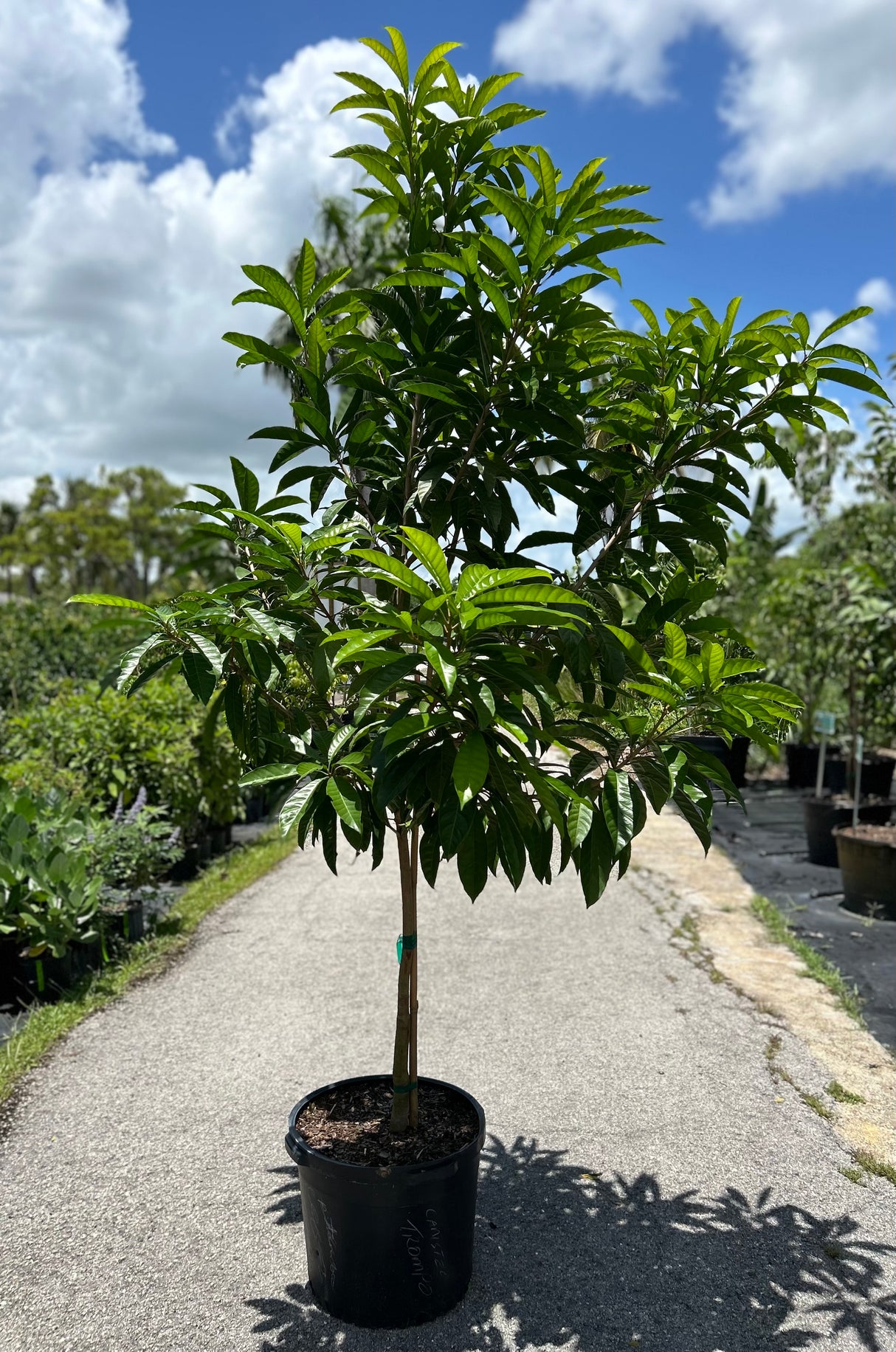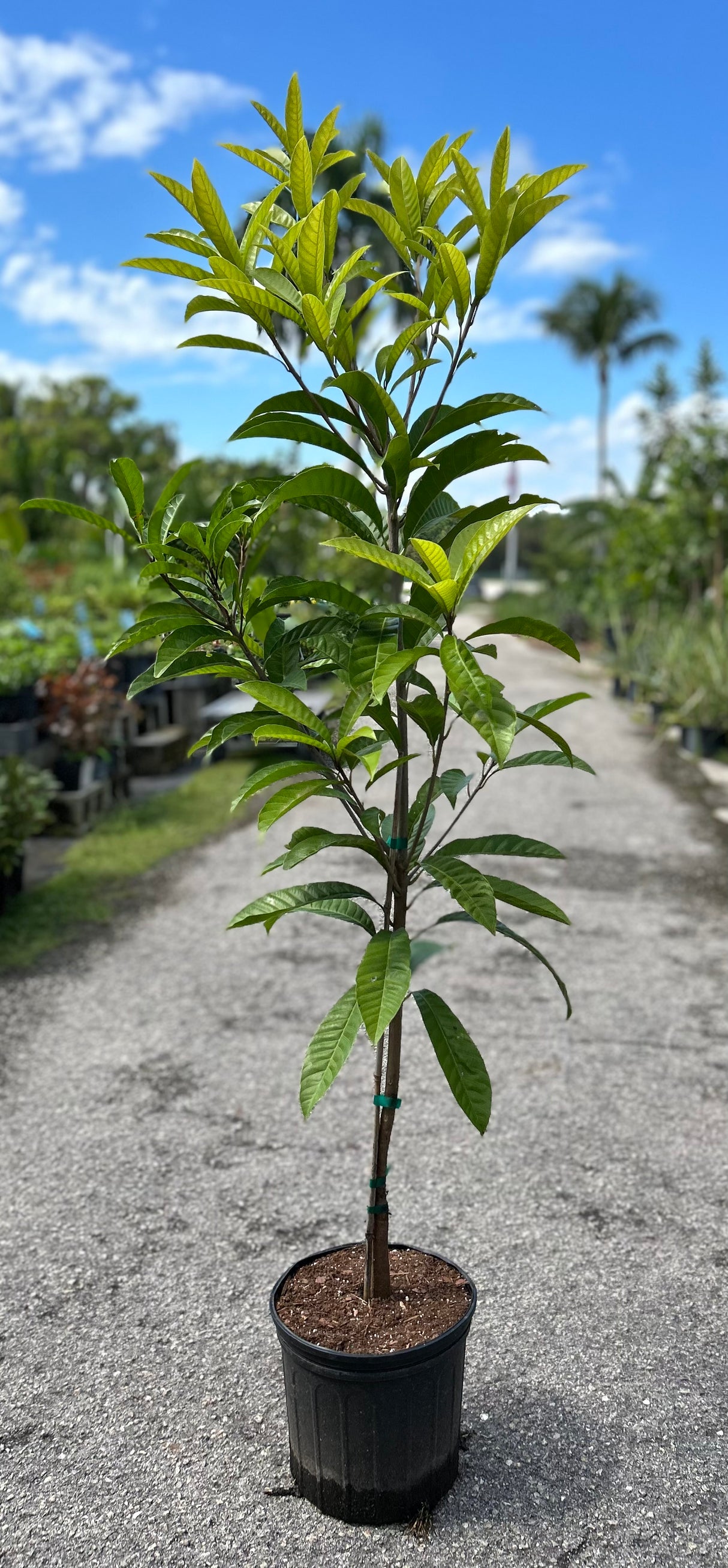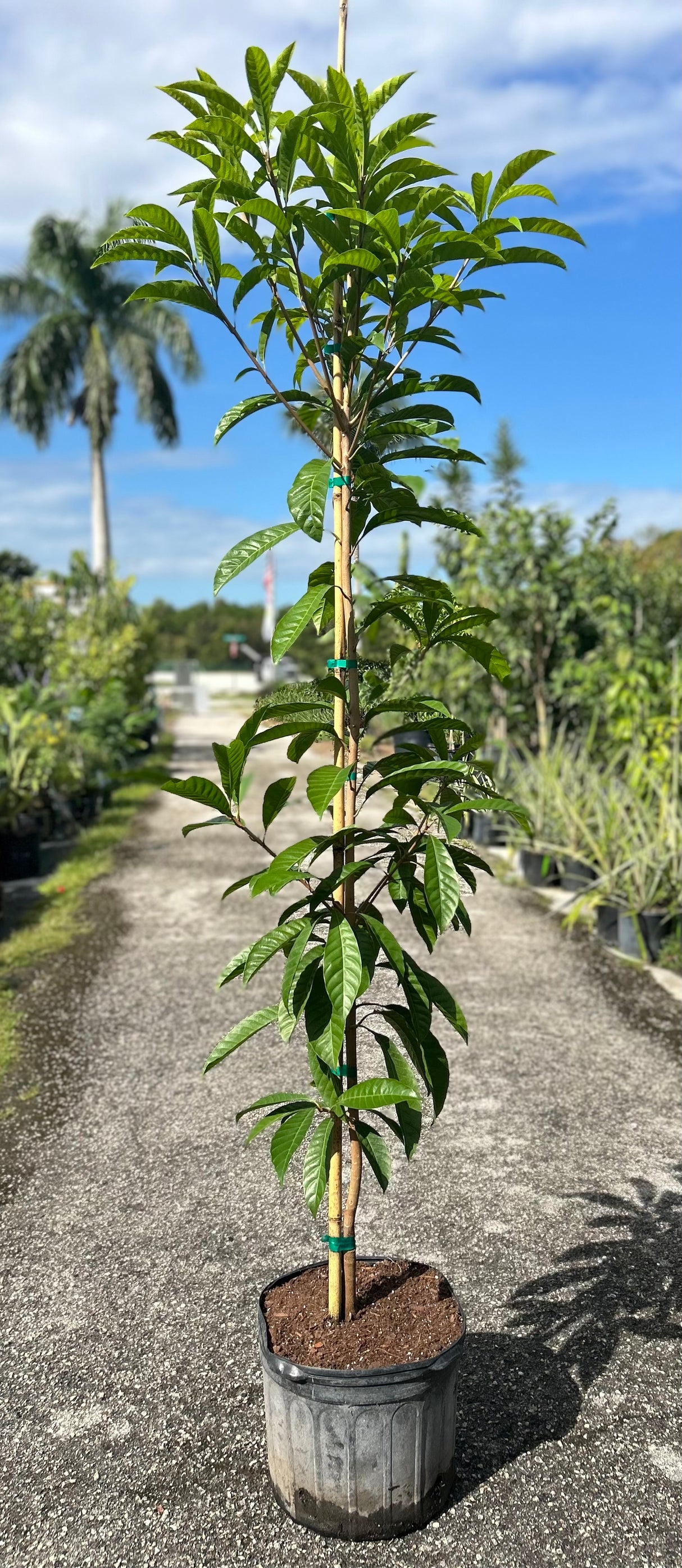Canistel Tree ‘Oro’
Canistel Tree ‘Oro’ - 25 Gallon is backordered and will ship as soon as it is back in stock.
Fruit Tree Pot Size Reference Guide
Fruit Tree Pot Size Reference Guide
Display general product information or specific product information using metafields.
We sell grafted fruit trees in various sizes, ranging from young 3-gallon plants all the way up to 25-gallon and larger, mature trees.
As a general rule of thumb, here’s what you can expect from each size:
3 gallon: Will take an average of 2-3 years before harvesting your first crop. Trees are small and may be just a single stem, or just starting to develop their first branches. Typical height is between 2-4 feet.
7 gallon: Will take an average of 1–2 years to produce a crop. Branching structure has started to develop, and trunks are between ½ to 1 inch thick. Typical height is between 3-6 feet.
15 gallon: You can usually expect fruit within a year of planting, and some trees are already fruiting at this size. Branch and canopy structure has taken shape and the tree is starting to grow wider. Trunks are between 1 to 1-½ inches thick. Typical height is 5-8 feet.
25 gallon and larger: These are mature trees, and most are ready to produce fruit or have already produced. They have been pruned and shaped multiple times at this point. Trunks are about 2” thick or larger. Typical height is 6-10 ft.
PLEASE NOTE: These descriptions are generalized - Some species of fruit trees are very quick to produce, and others take longer. For example, mulberry trees can start fruiting at a very young age, even as small as a 3 gallon. Mango, avocado, or sapodilla trees will take longer. Each species grows at a different rate and will take varying lengths of time to establish, and even different cultivars can be more precocious (quick to produce) than others.
Order Pick Up/Delivery Info
Order Pick Up/Delivery Info
When you select the “Nursery Pickup” option at checkout, please allow up to 24-48 hours for your order to be prepared for pickup. Once your order is ready for pickup, we will email you to let you know that it is ready. Plant orders may be held at the nursery for up to 10 days. If orders are not picked up within this time frame, a 15% restocking fee will be charged. If you are unable to pick up your order, please contact us to request a quote for delivery.
If you prefer to have us deliver your plants, select "Ship" at checkout and choose the "Local Delivery" option. (This option will not be visible if your order is below the $300 minimum for delivery). Delivery cost for orders within 20 miles is a flat rate of $50. If your address is further than 20 miles, we will invoice you for the additional mileage at $3/mile upon fulfilling your order. Deliveries are typically scheduled on Tuesdays and Wednesdays. Please include your phone number and any delivery instructions in the order notes.
Responsibility of Care
Responsibility of Care
Return Policy
Return Policy
All sales are final at the time of payment. Please be sure that you are happy with your order before submitting. Returns or exchanges will only be made under exceptional circumstances, at our discretion, and are subject to a 15% restocking fee. Once plants have left the nursery and are no longer in our care, they cannot be returned.
Inventory Disclaimer
Inventory Disclaimer
Every day, we take great care to maintain our inventory and make real-time updates as plants come and go. Because our inventory is constantly changing, and because in-store and online purchases are being made simultaneously, it is possible for a short window to occur when an item is physically sold out, but listed as in-stock on this platform. This is rare, but in the case that it does happen, we will contact you right away and either refund the item or offer an alternative. Thank you for your understanding!
Additionally, we add new plants to the nursery on a weekly, sometimes daily basis. Check back often to see what’s in stock, and click the “Notify me when this item is available” button to get updates when your wish-list items are restocked!
Description
Description
'Oro' is one of the largest fruited canistels, with exceptional rich flavor.
_________________________________________________________________________
Latin name - Pouteria campechiana
The Canistel tree is a member of the Sapote family, closely related to Mamey and Sapodilla. It is a beautiful, upright growing evergreen tree, whose fruit ripens in fall and winter. Canistel is a creamy and decadent dessert-like fruit, whose flavor to us is somewhere between sweet potato pie and vanilla frosting. It’s also known as eggfruit, due to its shape and deep yellow-orange color (like that of an egg yolk), and another common name is “cupcake fruit” which we particularly like!
The Canistel tree thrives in South Florida’s subtropical climate, producing its crop primarily in the winter months– a welcome addition to the harvest basket when other fruits are out of season. As for its health benefits, Canistel fruit is packed with vitamins A and C, beta-carotene, and antioxidants, as well as dietary fiber and healthy fats. The fruit is also high in carbohydrates, making it an excellent snack or breakfast option. Besides eating it fresh and ripe from the tree, Canistel’s culinary uses are where it really shines: This versatile fruit is a favorite for use in milkshakes (think eggnog shake, but an alternative and healthier option), baked goods such as pies and pastries, and is wonderful eaten dehydrated or freeze dried. Adding spices like cinnamon or nutmeg can really enhance the flavor and make the Canistel fruit into a true delicacy.
Canistel trees grow best in full sun, and well-drained, sandy soil. Once established, Canistel trees are fairly drought tolerant, needing supplemental watering only in extended dry periods. The tree is attractive, with glossy green leaves and an upright, stately form, growing to about 20 ft, but easily kept in the 10-12 foot range by yearly pruning. It makes a great focal point in a landscape, especially in the winter months when laden with fruit. We see Canistel as an excellent and under-rated fruit tree, adding diversity and seasonal variety to any South Florida food forest. We highly encourage you to plant one!
_____________________________________________________________________
Size: Can grow to 20’+, but manageable at 10-12’ with pruning.
Sun Requirements: Full sun
Cold Hardy: 30º F
Harvest Season: Fall/Winter
Watering requirements: Drought tolerant once established, but will benefit from extra watering.
Food Forest Layer: Canopy, Sub Canopy










